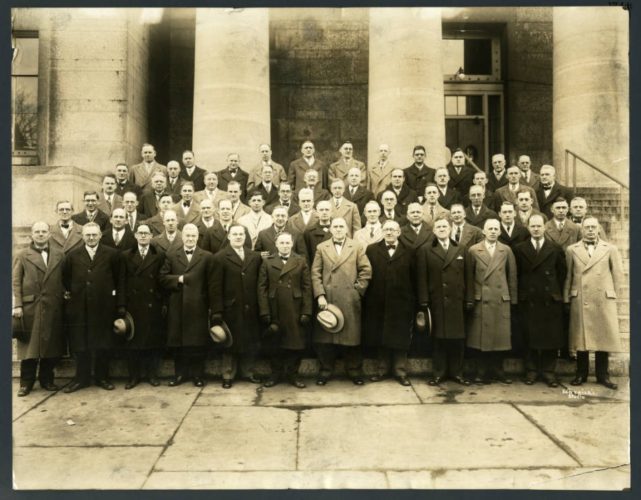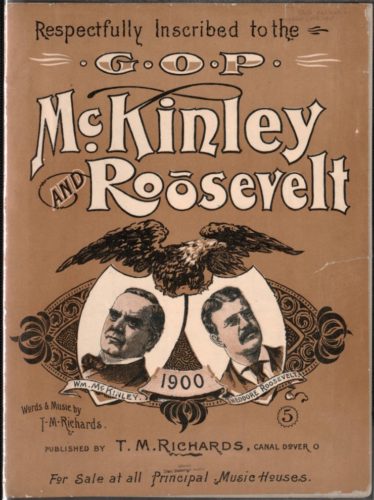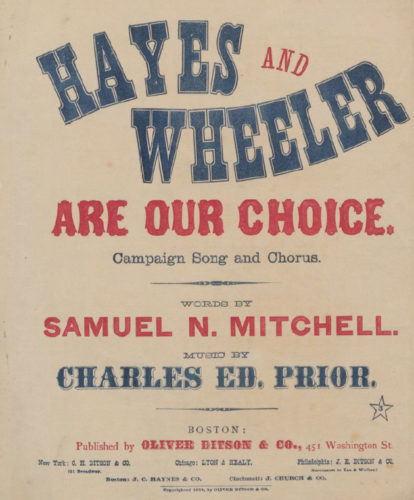The Power of Music: Political Campaign Songs

With the midterm elections just around the corner, today we’re featuring political and military music in Ohio Memory.

A song from George Washington’s second term is generally considered the first political campaign song; in fact, several of the Founding Fathers used songs extolling their virtues during their runs for president. However, it wasn’t until the 1840 election that the power of campaign music to influence results became clear. Laws that restricted voting to landowners had been recently repealed in several states, and many of the new voters had little or no education. Although newspapers and printed broadsides weren’t able to reach these voters, music was. Whig presidential candidate William Henry Harrison and his running mate John Tyler campaigned with the song “Tippecanoe and Tyler Too,” which referenced Harrison’s 1811 destruction of Shawnee chief Tecumseh’s headquarters during the Battle of Tippecanoe. With a familiar tune and catchy lyrics that lampooned Tyler’s opponent, the song spread throughout the voting population. (You can even listen to an alternative rock version of the song on They Might Be Giants’ 2004 album Future Soundtrack for America.)
Campaign songs quickly became important political tools—a trend that continued into the next century. Some were existing songs used without alteration. Franklin D. Roosevelt’s advisors decided on “Happy Days Are Here Again” for his 1932 presidential campaign. (It was chosen over “Anchors Aweigh,” a reference to Roosevelt’s past service as Assistant Secretary of the Navy.) Others were versions of an existing song with new lyrics; for example, Frank Sinatra recorded a new version of “High Hopes” for John F. Kennedy’s 1960 run for president. Still others took advantage of new formats. During the 1952 election, Dwight D. Eisenhower ran television ads with a song by Irving Berlin and animation by Walt Disney Studios.

The State Library of Ohio’s holdings include a bound collection of political and military music from the mid to late 1800s. In addition to campaign songs for Rutherford B. Hayes and an inauguration march for Ulysses S. Grant, the volume contains several pieces related to the Civil War. As with campaign songs, military music was often designed to influence and inspire. Songs and instrumental music were used to celebrate the achievements of leaders on both sides (such as “General Meade’s Grand March” and the “General Hardee Quickstep”), to build morale (“Secession or Victory Polka”), to celebrate the end of the war (“The New Union Medley, or the North and South”), and to remember fallen comrades (“When You and I Were Soldier Boys” and “No More the Bugle’s Stirring Blast”).
“Bound-with” materials like the State Library’s volume were created when several published items, often on a single theme or topic, were bound together into a single volume, usually by a private individual or a library. Although the bindery in this case did some excessive trimming, it still serves as a unique archival item that documents the unique power of music.
Thank you to Stephanie Michaels, Research and Catalog Services Librarian at theState Library of Ohio, for this week’s post!



Leave a Reply
You must be logged in to post a comment.